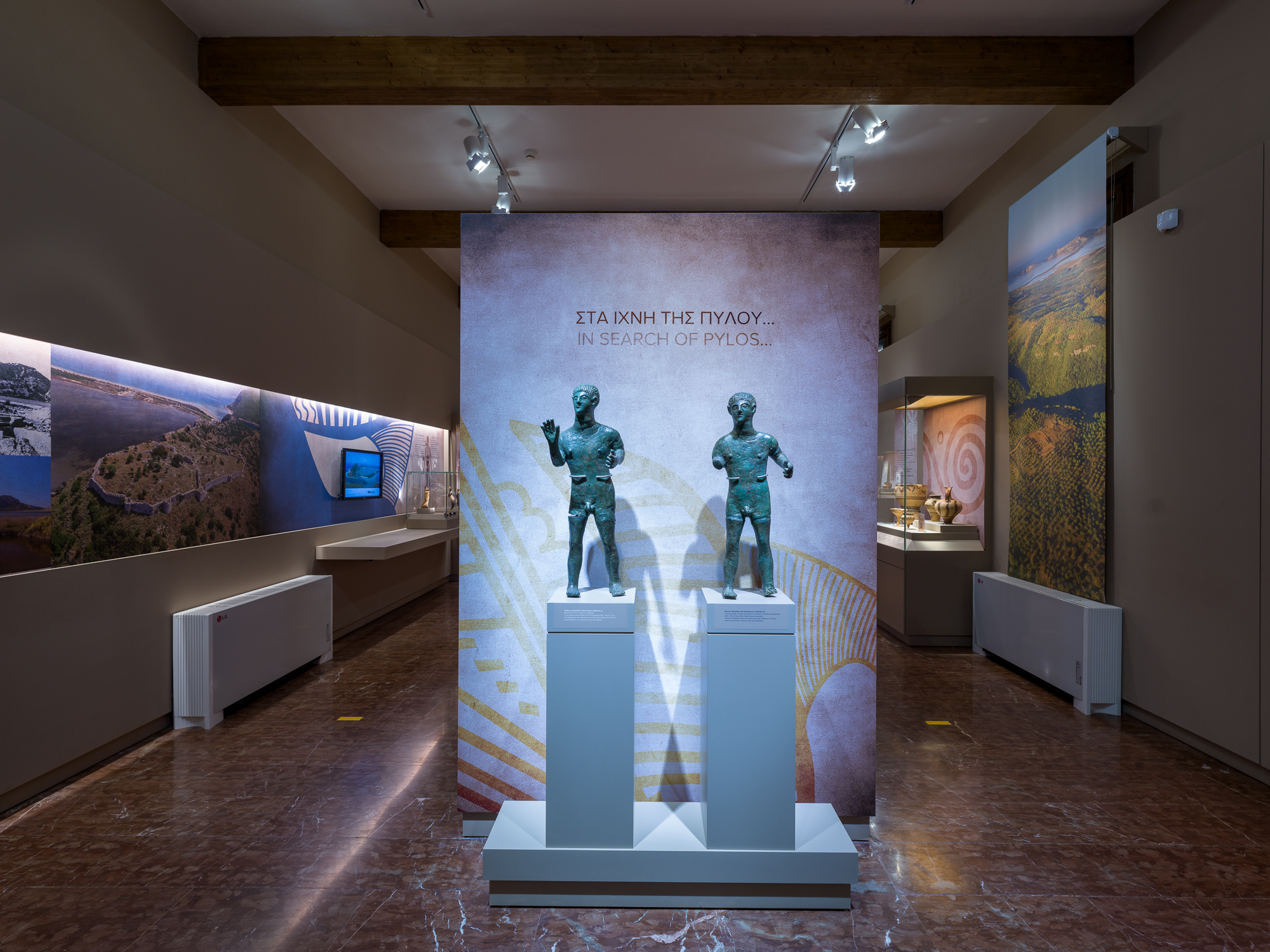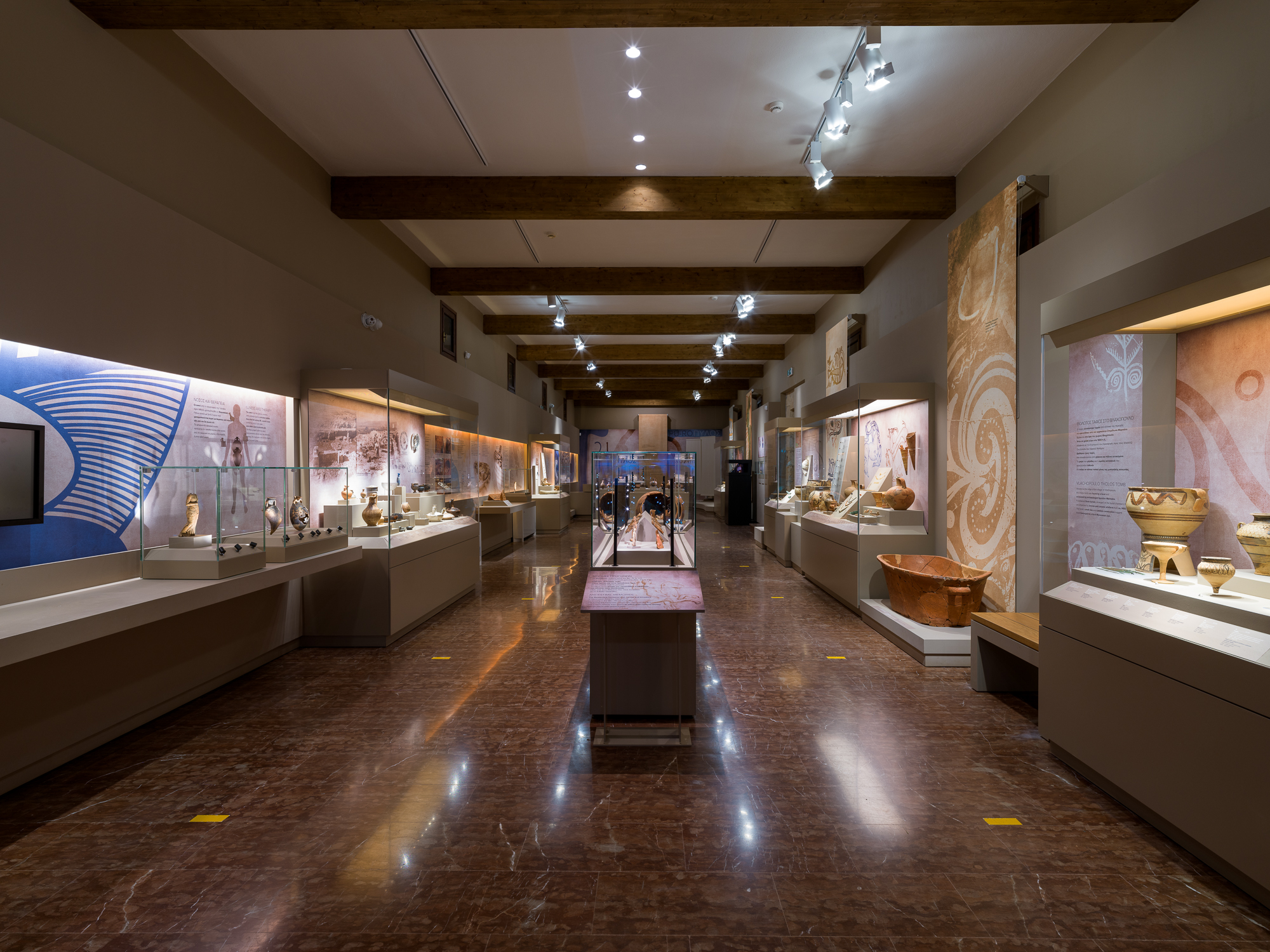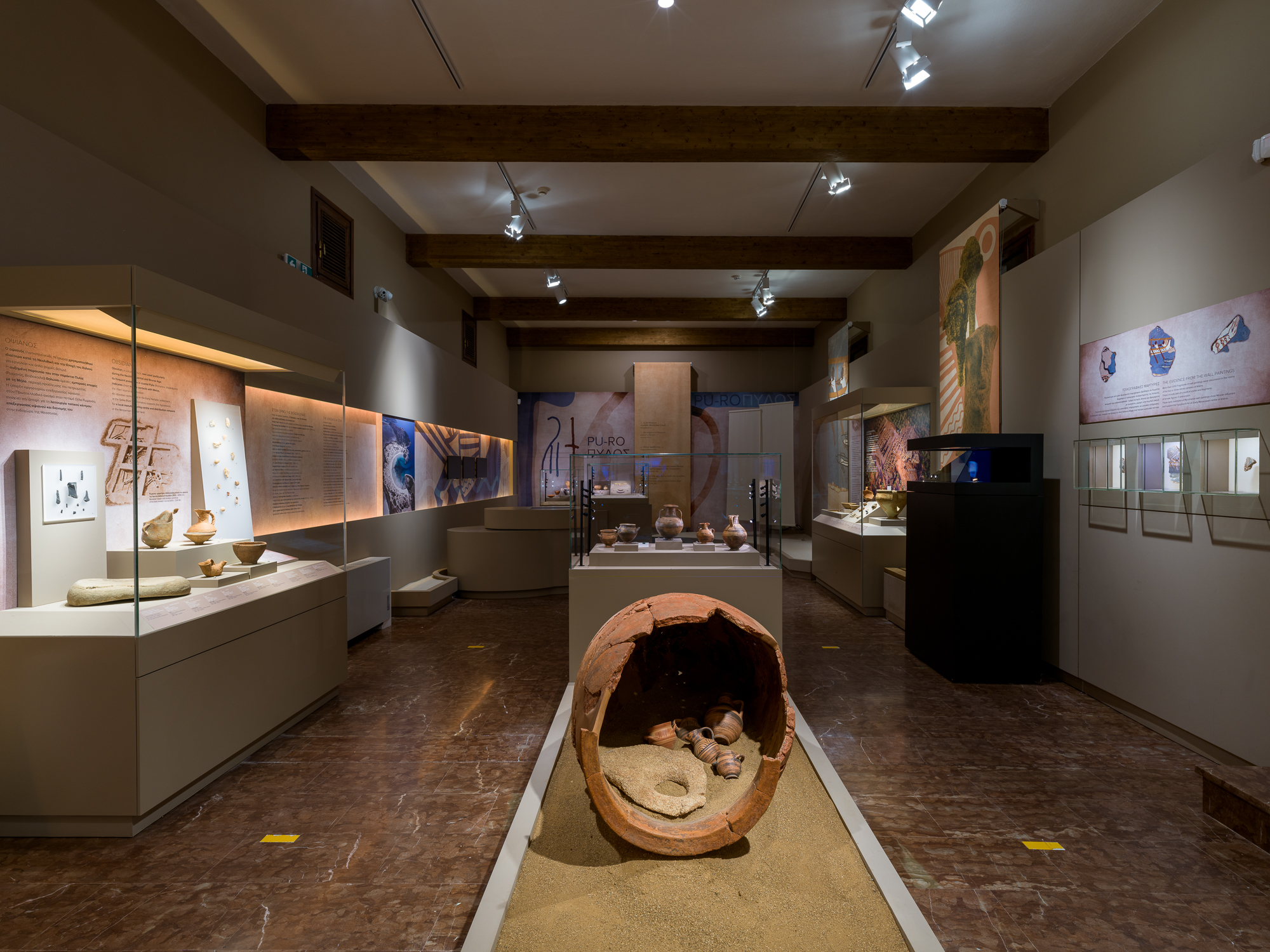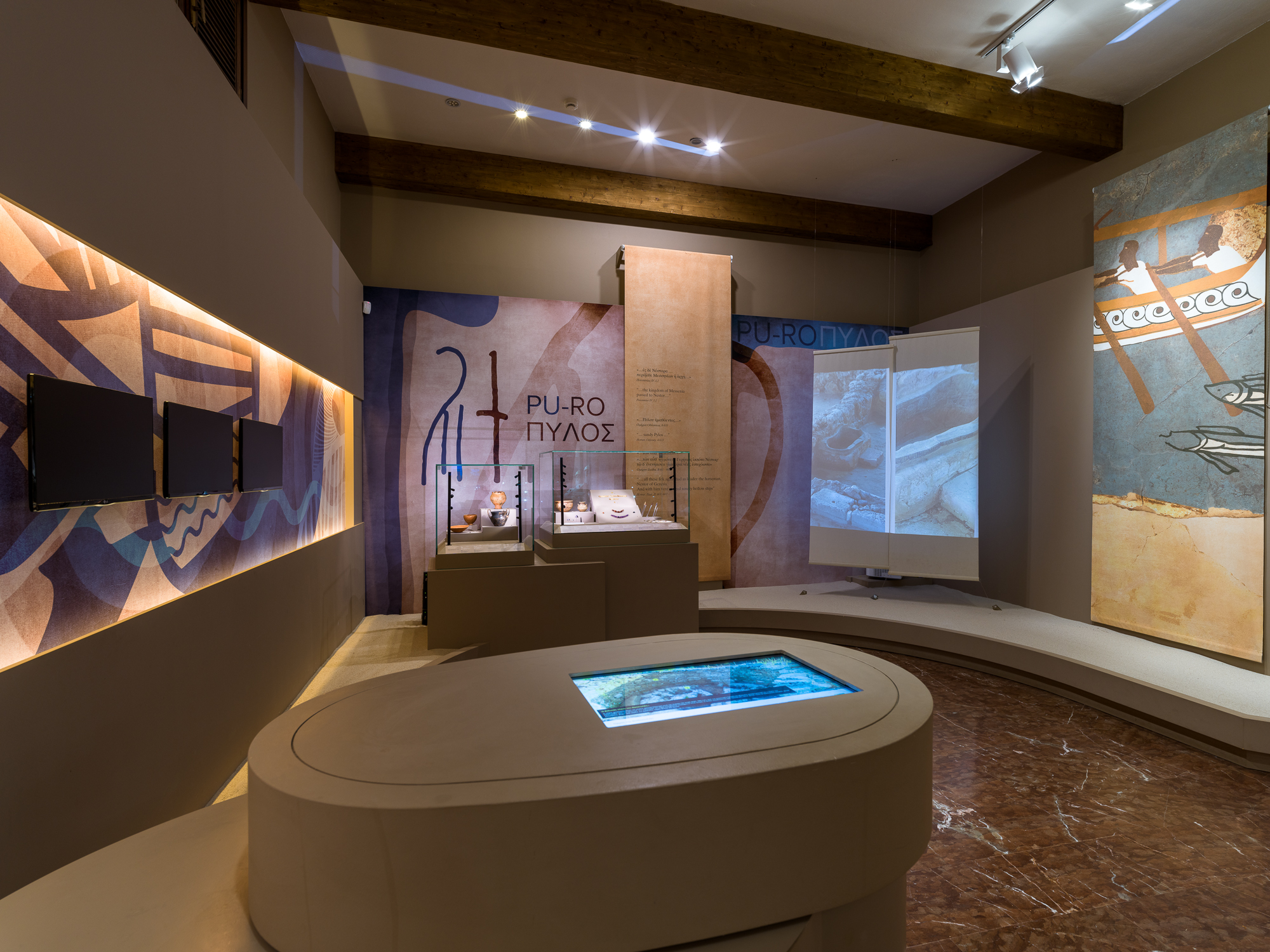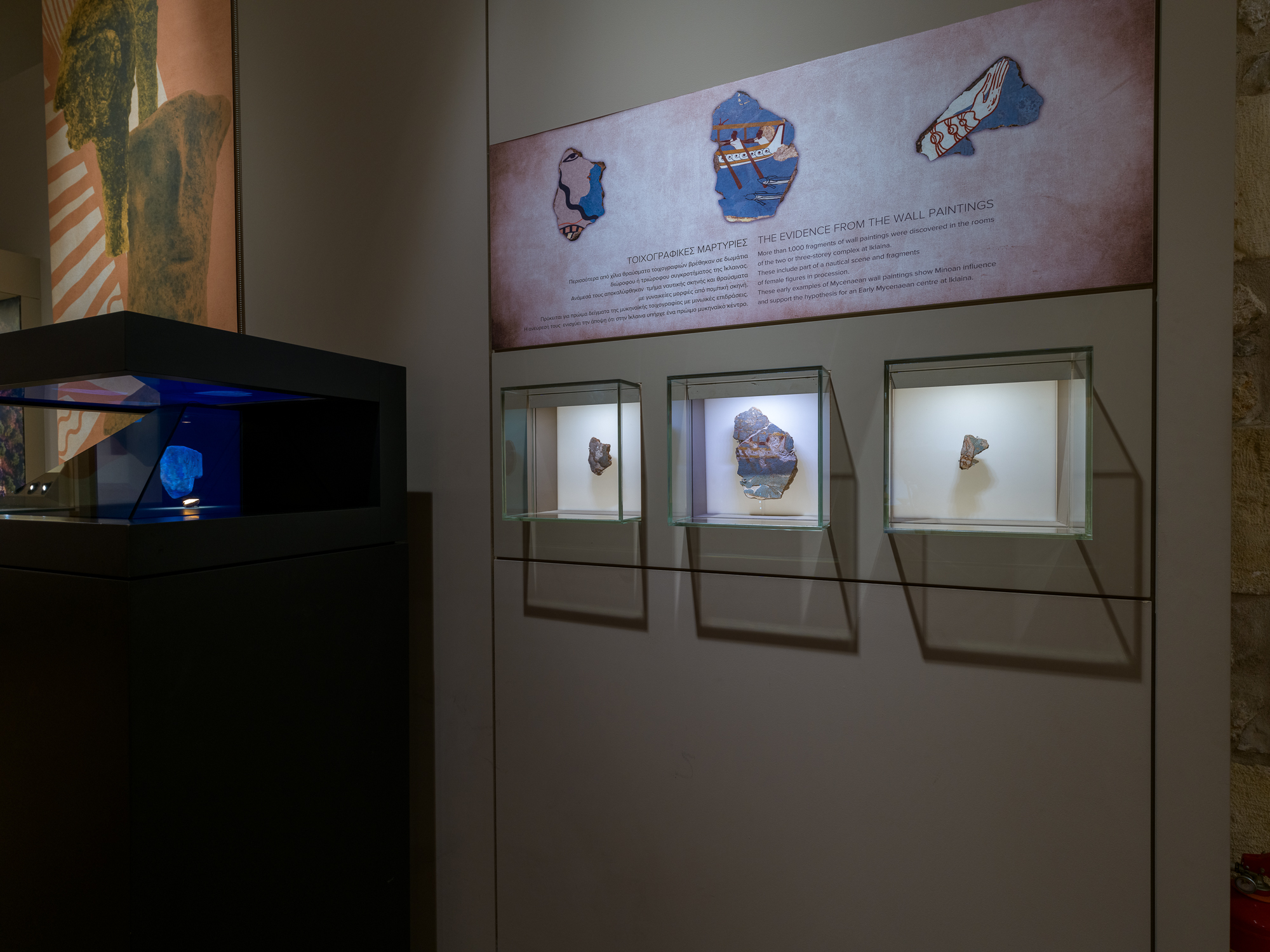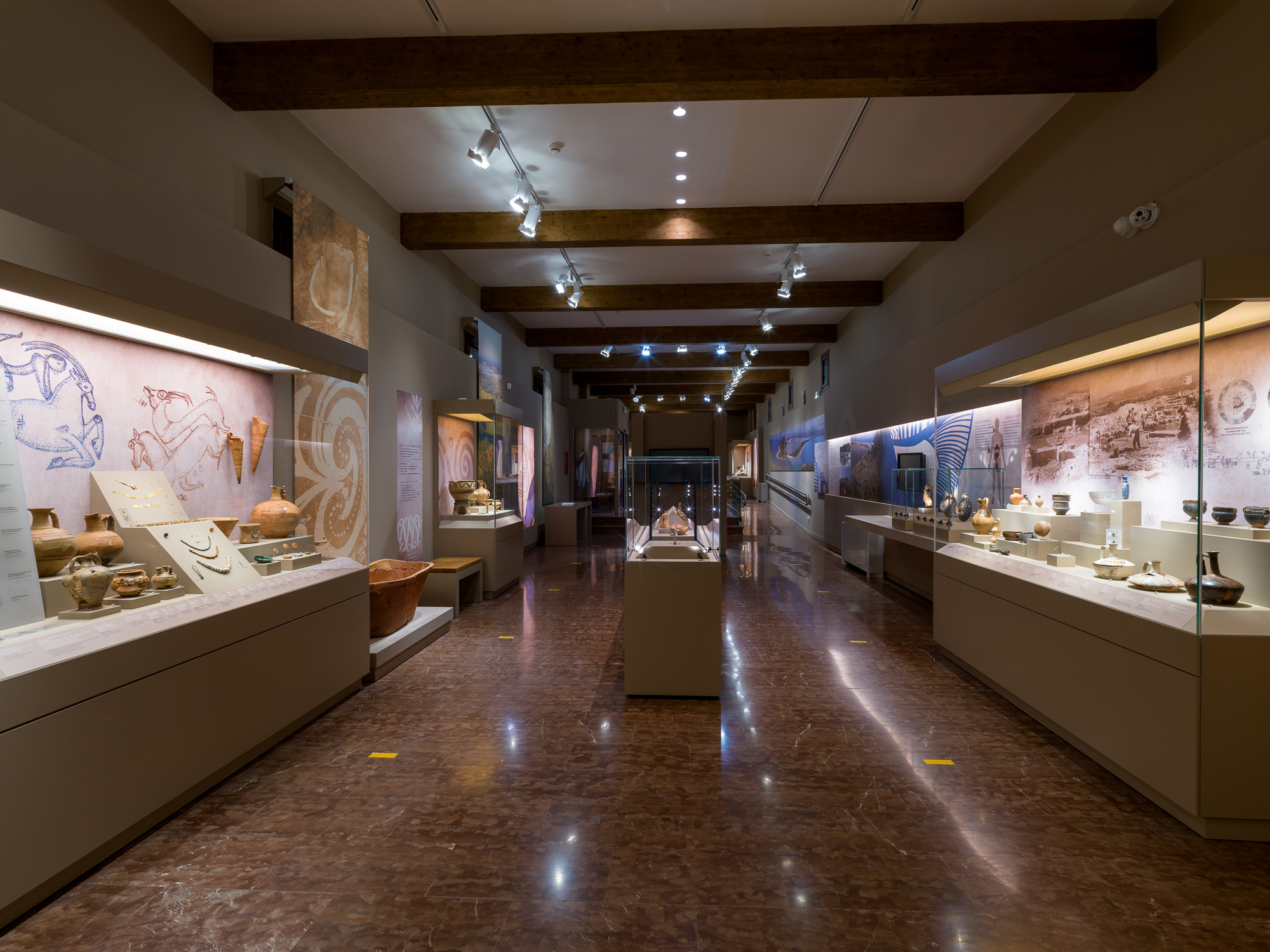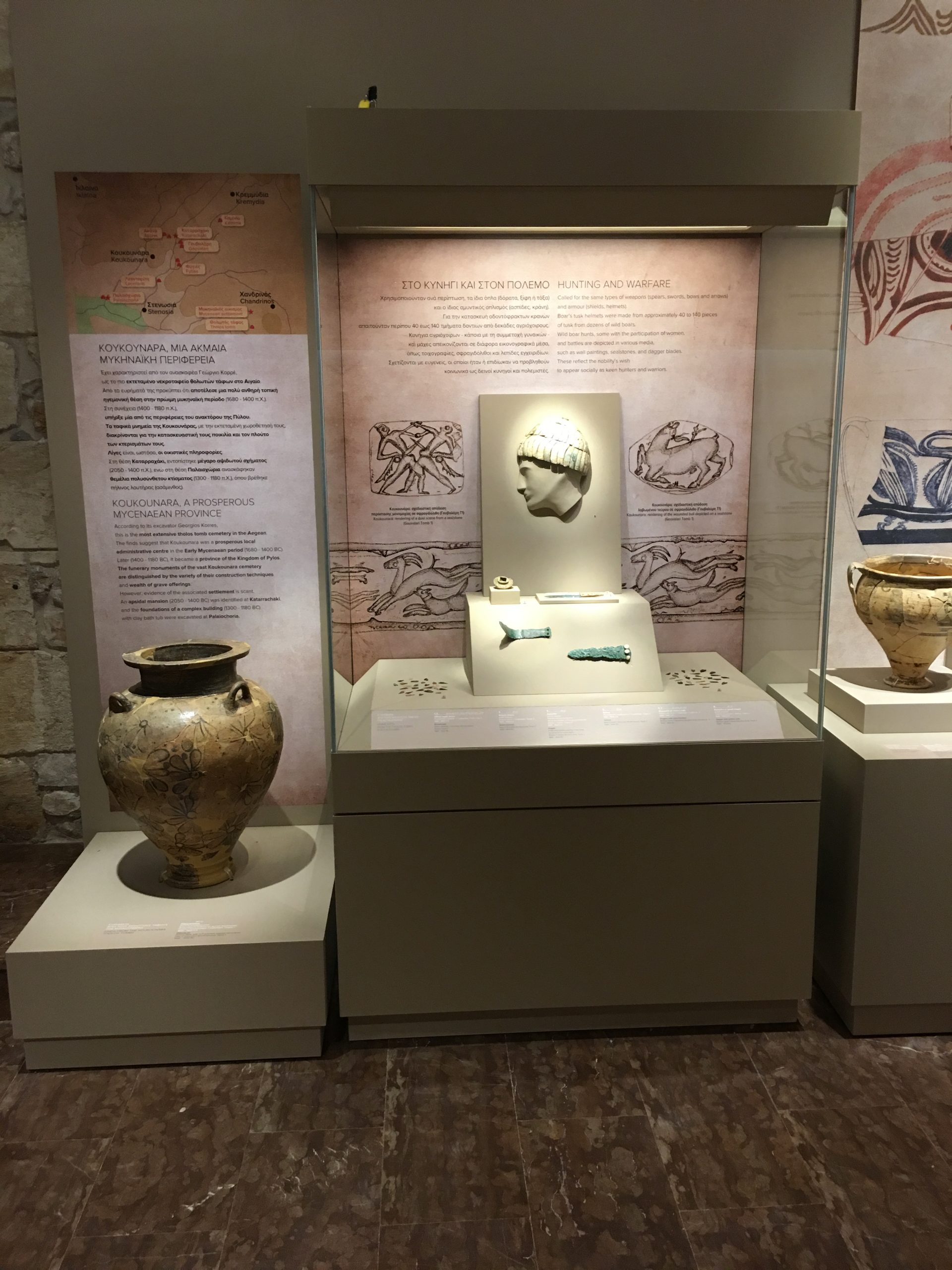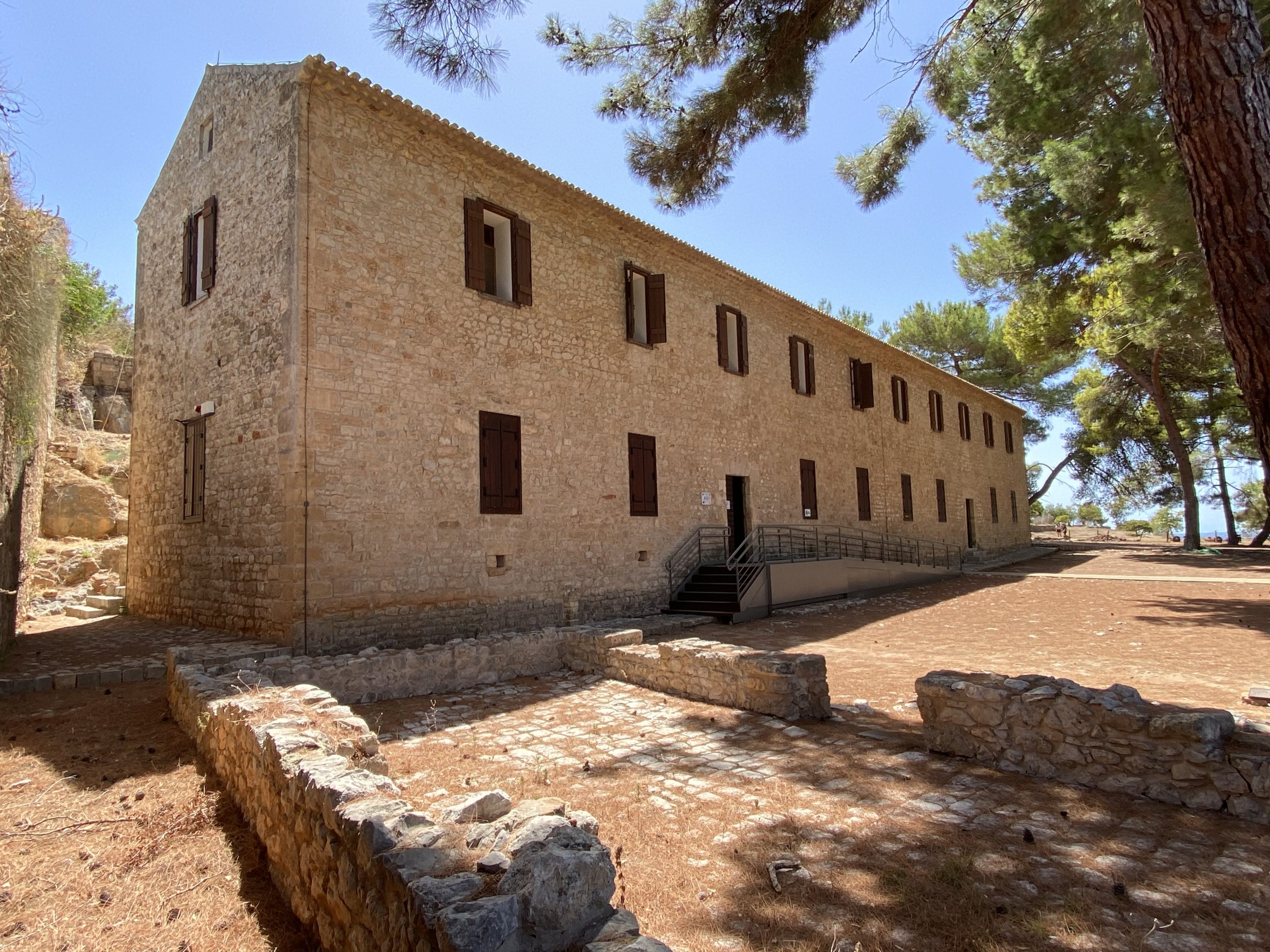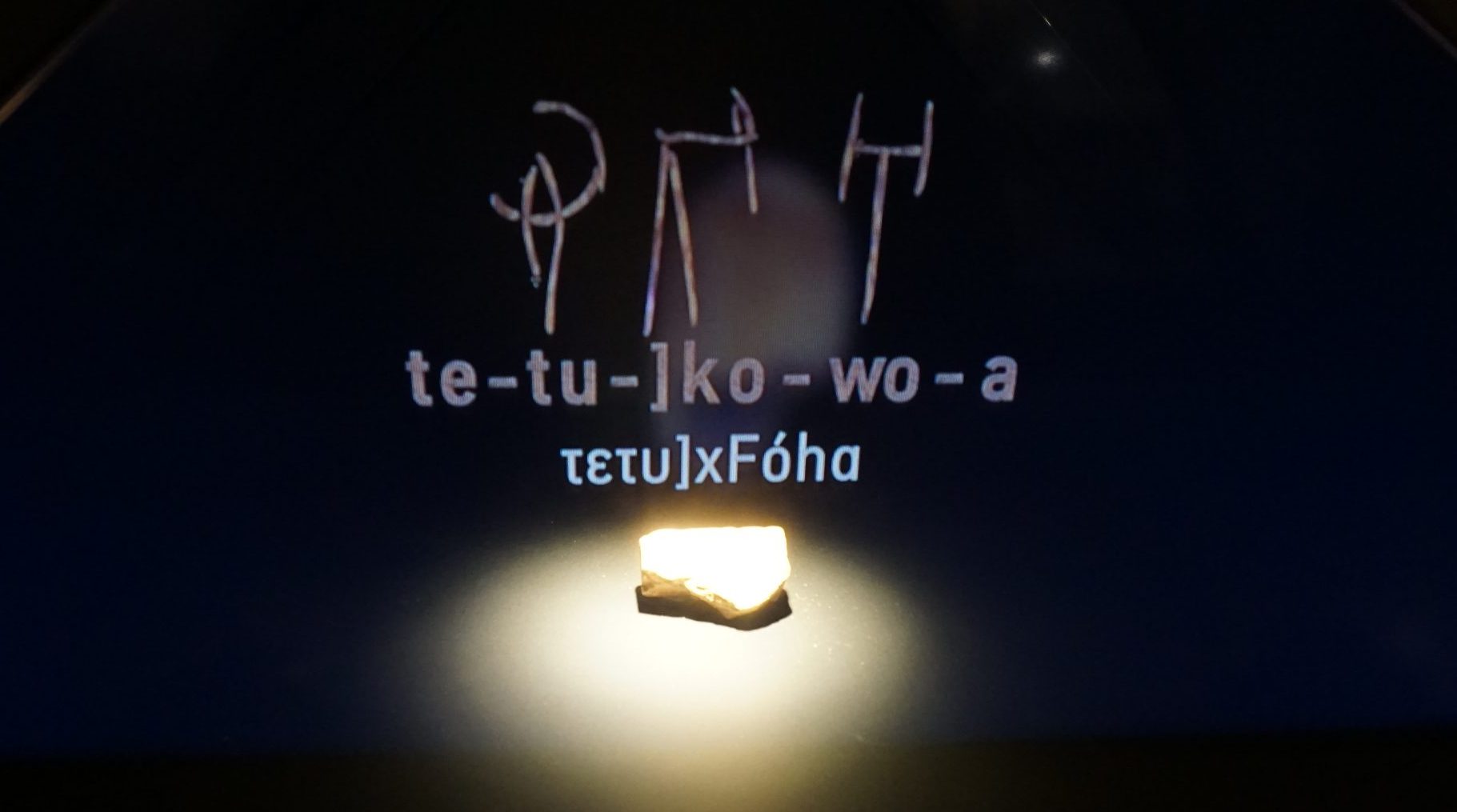

Housed in the Maison Building within the Niokastro fortress of Pylos, the New Archaeological Museum of Pylos continues the legacy of the Antonopouleion Archaeological Museum of Pylos, which operated in the town centre until 2014.
It forms part of a multifunctional cultural complex, enhancing the area’s role as a vibrant hub of heritage and creativity.
The exhibition narrative of the new Museum invites visitors to trace the footsteps of Pylos…, exploring its long and fascinating history.
Unique archaeological artefacts — such as one of the earliest Linear B tablets, discovered during excavations at Iklaina, Messenia — are complemented by innovative digital applications that vividly present the history of Pylia from prehistoric times to the Roman period.
The exhibition is organized around two thematic routes:
-
The first, entitled “…upon the most beautiful bay in the world…”, presents the continuous habitation along the Pylian coast through the ages.
-
The second, “In the Pylian Hinterland,” focuses primarily on the rich Mycenaean history of the region.
The relocation and re-exhibition of the Archaeological Museum of Pylos, within the organized archaeological site of Niokastro, contributes to the creation of a multifunctional cultural complex.
Within the fortress walls, monuments, museums, and exhibitions coexist, complementing one another and collectively highlighting the historical, religious, architectural, and cultural unity of Pylos and its wider region.
At the centre of the castle’s main enclosure stands the Church of the Transfiguration of the Saviour, originally built as an Ottoman mosque during the reign of Sultan Murad III (1573–1595). This outstanding monument underwent comprehensive restoration works within the framework of the NSRF 2007–2013.
The first Museum of Underwater Antiquities in Greece has operated since 2012 in the “Pasha Building”, featuring the temporary exhibition “Sunken Journeys, Human Explorations: Traces in the Seas of the Peloponnese.”
In the Makrygiannis bastion, the exhibition “Submerged Settlements of Southern Peloponnese” has been organized, while amphorae from shipwrecks are displayed in the open vaults of the Acropolis. In the large Vault of the Acropolis, visitors can also view a digital reconstruction of the Battle of Navarino.
As part of the relocation and transfer of the Archaeological Museum of Pylos, a museological study was prepared by a team of archaeologists from the former 38th Ephorate of Prehistoric and Classical Antiquities, which was approved in April 2012 by the Museums Council, receiving highly positive feedback, and subsequently ratified by Ministerial Decision.
The accompanying museographic study was completed and approved in May 2013.
The project, titled “Re-exhibition of the Archaeological Museum of Pylos, Municipality of Pylos–Nestor, Region of Peloponnese,” was included in the Operational Programme “Competitiveness and Entrepreneurship” (EPAN II) of the NSRF 2007–2013, with MIS code 448808 and a budget of €1,099,750.00, and was completed in December 2015.
Until the implementation of the new organizational structure of the Ministry of Culture in October 2014, the project was implemented by direct administration under the supervision of the then competent 38th Ephorate of Prehistoric and Classical Antiquities, headed by Anna Vasiliki Karapanagiotou (Acting Director).
Thereafter, it was continued and completed by the Ephorate of Antiquities of Messenia, under the direction of Evangelia Militsi-Kechagia, and successfully completed in December 2015.
During the project’s implementation, specialized studies were carried out concerning lighting, electromechanical installations, architectural design of display cases, bases, and structures, as well as the conservation of artefacts.
The Maison Building within Niokastro, Pylos, which now houses the new exhibition, is an elongated, listed historic structure with many openings and limited exhibition space. Taking these characteristics into account, every effort was made to harmonize the exhibition design with the building’s architectural shell.
For this purpose, a careful selection of artefacts was made from the entire available material, drawn from both older and more recent excavations.
The exhibition focuses on systematically excavated and published sites, presenting finds suitable for display that form the strong narrative links in the journey through the history of Pylos.
Sites representing intermediate historical stages, for which our knowledge derives primarily from written sources or scattered archaeological evidence (e.g. Roman Pylos, the Battle of Sphacteria), are presented through digital applications, allowing visitors to explore the historical continuity of the region interactively.




